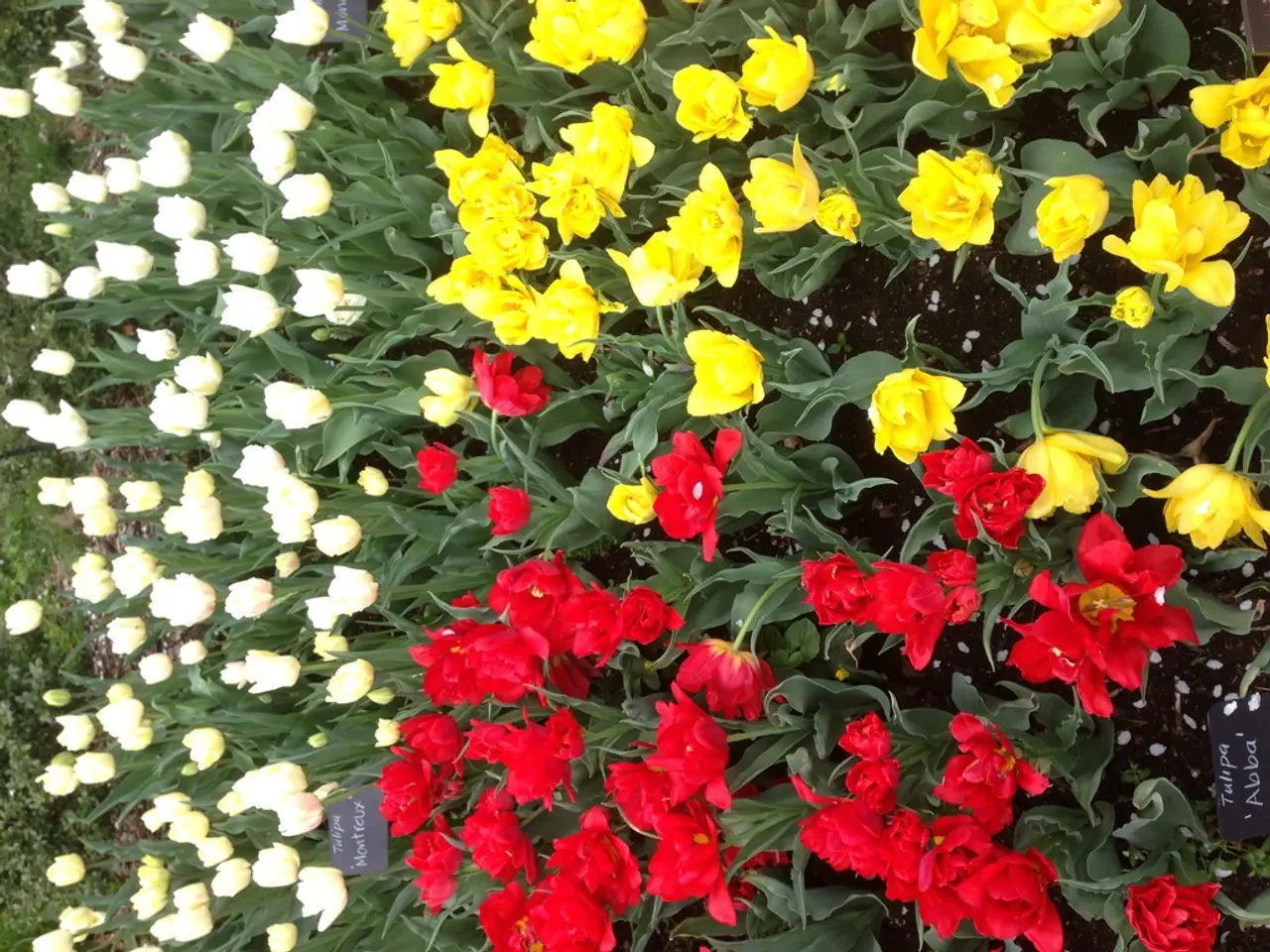Nine Varieties of Orchid Species Identified
Orchids, with their captivating blooms and lush foliage, can transform your garden or home into a haven of tropical beauty. Here's a guide to help you care for some of the most popular orchid species.
Phalaenopsis (Moth Orchids)
These orchids thrive in moderate to low indirect light, avoiding direct sun to prevent scorching. They prefer temperatures between 65–80°F (18–27°C) and require moderate humidity. Water them about once a week during growth, reducing to every two weeks during flowering, keeping the medium slightly damp but avoiding overwatering. Phalaenopsis grow best in loose orchid potting media with pine bark, perlite, charcoal, and sphagnum moss for good drainage. Repot every 1–2 years or if the medium decomposes. Sensitive to overwatering, large leaves indicate less light is needed.
Cattleya
Cattleyas prefer bright, indirect light, tolerating some direct morning or late afternoon sun. They thrive in temperatures between 70–85°F (21–29°C) during the day and cooler nights down to 55–60°F (13–16°C). Water them thoroughly when the medium is dry, and provide moderate to high humidity. Use coarse potting mix with bark and perlite, and repot when the medium breaks down, roughly every 1–2 years. Cattleyas are known for their fragrant blooms and bright colours.
Ludisia Jewel (Jewel Orchids)
Ludisia Jewels are low to moderate light orchids, thriving in shaded conditions. They prefer temperatures between 65–80°F (18–27°C) and humid conditions. Keep the medium moist but not soggy, and provide higher humidity. Use well-draining but moisture-retentive medium such as peat-based mixes. These orchids are grown primarily for their attractive foliage rather than flowers.
Oncidium
Oncidium orchids prefer bright indirect light, with some species tolerating more light. They thrive in daytime temperatures between 65–75°F (18–24°C), with cooler nights preferred. Water them when the medium dries out, and more frequently in warm growth periods. Their medium is similar to cattleyas, and they require good air flow. Oncidium orchids are often called “dancing lady” orchids.
Epidendrum
Epidendrum orchids prefer bright light to full sun, depending on the species. They thrive in temperatures between 60–80°F (16–27°C), with many species more tolerant of temperature fluctuations. Water them when dry, and use well-draining mixes of bark and perlite. Some Epidendrum species grow epiphytically.
Paphiopedilum (Slipper Orchid)
Paphiopedilums prefer indirect light, low to moderate, avoiding direct sun as leaves can burn. They thrive in cooler to intermediate temperatures: 60–75°F (16–24°C). Water them regularly to keep the potting media moist but not soggy, and avoid letting them dry out. Use fine bark, perlite, and peat-based mix. Repotting is necessary about every 2 years. Paphiopedilums are sensitive to overwatering and slow-growing, sometimes taking many years to mature.
Miltonia
Miltonias prefer moderate indirect light, avoiding direct afternoon sun. They thrive in cooler environments with temperatures between 55–70°F (13–21°C). Water them frequently, keeping the medium moist but not soaked. Use well-draining bark-based mix, and provide humidity. Miltonias are often called “pansy orchids” for their flower shape.
Cymbidium
Cymbidium orchids prefer bright light, tolerating some direct sunlight, especially morning. They thrive in cooler temperatures: 50–85°F (10–29°C), with cooler nights (around 50–60°F) to initiate flowering. Water them thoroughly, keeping the medium moist but not wet, and reduce watering after flowering. Use coarser orchid bark mix, and repot every 2-3 years. Cymbidium orchids can grow up to 24-48 inches tall and are popular for their waxy flowers and ability to tolerate cooler temperatures.
Vanda
Vandas prefer very bright light, often full sun tolerated with acclimation. They thrive in warm temperatures: 70–90°F (21–32°C), loving heat and humidity. Water them frequently due to their aerial roots, requiring high humidity. Use orchid mounts to support their growth in hanging arrangements. Vandas are known for their striking, colorful flowers and require excellent air circulation and humidity.
Most orchids thrive with good air circulation and avoid water pooling in the crown/leaves to prevent rot. Fertilization is generally recommended with balanced orchid fertilizer diluted to half strength during growth. Repotting varies by species and medium condition, typically every 1–3 years. Specific rare species such as some Paphiopedilum and Vanda cultivars are slower or more exacting to grow.
Understanding their unique needs, such as the preference for indirect light or increased humidity, is key to enjoying their stunning blooms and foliage.
- In terms of lifestyle and home-and-garden, cultivating orchids can turn your garden or home into a tropical retreat, transforming it into a haven of beauty with their captivating blooms and lush foliage.
- For those passionate about fashion-and-beauty, the Phalaenopsis orchid is a popular choice, known for its delicate, long-lasting flowers that add an elegant touch to any space.
- For food-and-drink aficionados, understanding the unique needs of orchids, such as maintaining good air circulation to prevent rot, can provide insight into the care and maintenance of other delicate plants and produce.
- In the realm of personal-growth and self-development, the process of caring for orchids can serve as a metaphor for persistence and patience, as some species, such as the Paphiopedilum and Vanda cultivars, requireing a more exacting approach and longer periods to mature.
- For those pursuing career-development and learning, the world of orchids offers exciting opportunities, with various species requiring different care methods and environmental conditions, providing continuous room for growth and exploration in the field of horticulture.




